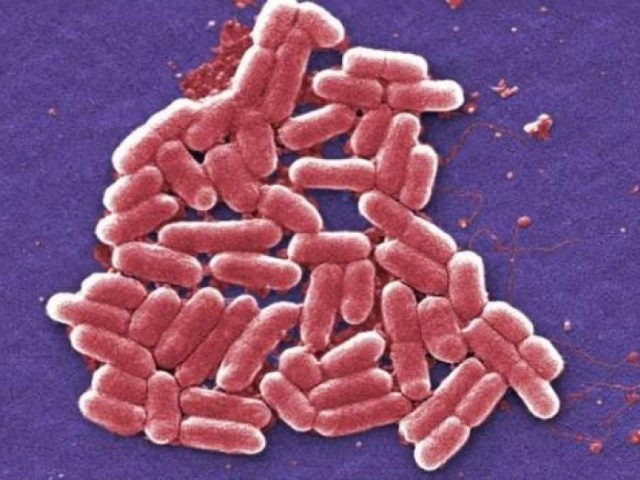A day long-feared by doctors has arrived: A patient in the United States infected by a strain of bacteria that appears completely resistant to antibiotics.
Before exploring the significance of this development, it is important to note that the patient in question is alive and has even been released from the hospital, although the study reported by the Washington Post is vague on most details of her condition. She is described as a 49-year-old Pennsylvania woman, whose urine contained a strain of E. coli bacteria that resisted colistin, the “antibiotic of last resort.”
She was treated at an outpatient military facility in Pennsylvania, with the Defense Department and Walter Reed National Military Medical Center involved in her case.
CNN adds that the patient had not traveled outside the United States during the past five months, and doctors do not yet understand how the bacteria got into her system.
This patient is treated as a harbinger of doom by researchers, however. Her infection “heralds the emergency of a truly pan-drug resistant bacteria,” a “nightmare bacteria,” a “superbug,” and perhaps the “end of the road for antibiotics,” according to various experts quoted by the Post — one of whom is Centers for Disease Control director Tom Frieden.
A more dangerous strain of colistin-resistant bacteria had previously been discovered in pigs, and some people, in China, Canada, and Europe. CNN reports the USDA found a sample of resistant E. coli in a single sample of pig intestine and has been trying to track down which farm the pig came from.
Also, it has been noted that last-resort colistin is being resorted to more frequently, even though it can cause complications including kidney damage. As the resistance gene spreads to more bacteria, the bugs will begin winning an arms race against medicine.
The case that has doctors so alarmed is not considered a particularly dangerous strain in and of itself. The patient recovered, and there is no sense that her strain of E. coli will turn into an epidemic. Rather, the fear is that antibiotic-resistance genes will begin propagating into other, more dangerous bacteria.
Some of the worst strains are already resistant to nearly everything except colistin. CNN quotes CDC statistics that at least 2 million Americans per year become infected with highly resistant bacteria, and at least 23,000 of them die from their infections. The evolution of a true “superbug” would make those numbers much worse.
Reuters cites some factors contributing to the rise of the superbug, including over-prescription of antibiotics by doctors, their widespread use in food products, and the reluctance of pharmaceutical companies to put extensive resources into developing new treatments because antibiotics are not as profitable as other products.
On that latter point, Reuters reports that dozens of drugmakers and diagnostic companies have “signed a declaration calling for new incentives from governments to support investment in development of medicines to fight drug-resistant superbugs.”
CDC Director Frieden warned that “we may be in a situation where we have patients in our intensive care units, or patients getting urinary-tract infections for which we do not have antibiotics.”
Pennsylvania Sen. Robert Casey is quoted by the Post as describing antibiotic-resistant bacteria as an “urgent public health problem that we must focus on intensively.”
“This is definitely alarming. The fact that we found it in the United States confirms our suspicions, and adds urgency to actions we need to work on antibiotic stewardship and surveillance for this type of resistance,” said David Hun of the Pew Charitable Trust.

COMMENTS
Please let us know if you're having issues with commenting.